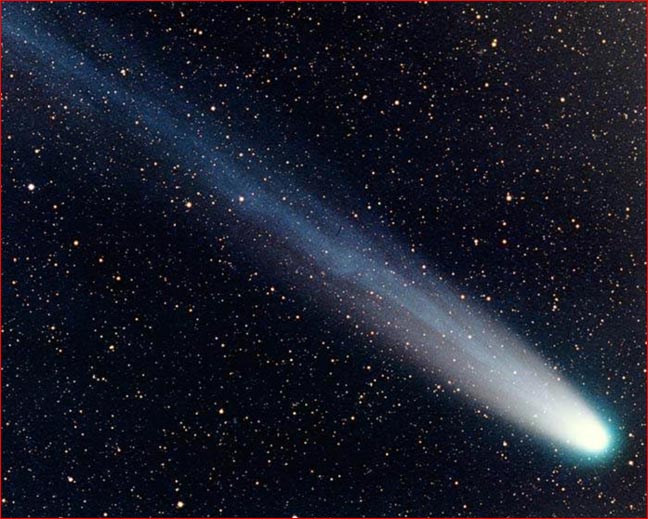Research lines:
- Astrochemistry
- Atmospheric Chemistry
- Molecular Structure of New Molecules
 For a long time the interstellar medium was considered to be too hostile for chemical species.
Only few and simple molecules were thought to be formed under such extreme conditions. Nevertheless this
view has changed dramatically in the last decades. Nowadays more than 130 molecules have been observed
in the interstellar medium and/or circumstellar environments. A rich chemistry in the interstellar medium
has emerged, with relatively complex molecules (the largest detected molecule by radioastronomy has 13
atoms) being formed. The conditions of the interstellar medium (low pressure, low temperature), are almost
ideal for the application of theoretical chemistry. Our group is interested in two different aspects of
Astrochemistry. In first place, we try to provide structural information about new candidates for interstellar
detection. We are mainly interested in molecules containing second-row elements (Mg, Al, Si, S, P, Cl). This
structural information might guide radioastronomical searches of the involved species. In second place, we
study possible process for the synthesis of molecules in space. These studies can help in the proposal of
models for the chemistry in space, providing synthetic routes for known interstellar molecules. In addition,
studies of chemical reactions may lead to suggestion of new interstellar candidates. At present time we are
involved in a research program dealing with the synthesis of prebiotic molecules in the interstellar medium,
such as amino acids.
For a long time the interstellar medium was considered to be too hostile for chemical species.
Only few and simple molecules were thought to be formed under such extreme conditions. Nevertheless this
view has changed dramatically in the last decades. Nowadays more than 130 molecules have been observed
in the interstellar medium and/or circumstellar environments. A rich chemistry in the interstellar medium
has emerged, with relatively complex molecules (the largest detected molecule by radioastronomy has 13
atoms) being formed. The conditions of the interstellar medium (low pressure, low temperature), are almost
ideal for the application of theoretical chemistry. Our group is interested in two different aspects of
Astrochemistry. In first place, we try to provide structural information about new candidates for interstellar
detection. We are mainly interested in molecules containing second-row elements (Mg, Al, Si, S, P, Cl). This
structural information might guide radioastronomical searches of the involved species. In second place, we
study possible process for the synthesis of molecules in space. These studies can help in the proposal of
models for the chemistry in space, providing synthetic routes for known interstellar molecules. In addition,
studies of chemical reactions may lead to suggestion of new interstellar candidates. At present time we are
involved in a research program dealing with the synthesis of prebiotic molecules in the interstellar medium,
such as amino acids.
 Many chemical processes taking place in the atmosphere might be relevant from the enviromental point of
view. Despite the large number of experimental studies on such reactions carried out in the last decades,
there are still several processes which remain unstudied. In particular, we are interested in radical-radical
reactions, since the experimental information is rather scarce. In addition, this type of reactions are
challengeing to theoreticians. For example, usually these reactions take place through highly stable
intermediates and therefore correspond to barrier-free reactions involving very high internal energies.
Within this field we are interested on the reactions of radicals (for example, simple atoms) with halocarbon
derivatives that can be
formed in the atmosphere. Halogenated radicals can be formed in the atmosphere through the reaction of
halogenated hydrocarbons with hydroxil radical. The CHXY radicals (X,Y being H, F, Cl) are present at different
levels of the atmosphere, derived from the combustion of halogenated polymeric materials. Once formed, they can
react with other species relatively abundant in the atmosphere. We carry out kinetic studies for these processes.
We have paid particular attention to the applicability of the statistical kinetic theories to this type of
reactions. Through molecular dynamic studies we have shown that some of them behave in a non-statistical way.
Related to this topic we have recently started a research program (through a collaboration with the group of
Prof. José A. Sordo, Universidad de Oviedo) of the reactions between bare metal cations with CH3X (X=H,F, and Cl).
This type of reactions are interesting from the chemical viewpoint, as the methyl halides represent simple
examples of model compounds for analyzing the activation of the carbon-halogen bond and the competition
between carbon-halogen and carbon-hydrogen activations. Recent experimental results (D.K. Bohme and co-workers)
are available. The three commonly proposed mechanisms for this type of processes: (a) electron transfer,
(b) oxidative addition, and (c) coordination, are explored. The Rice-Ramsperger-Kassel-Marcus (RRKM) theory
is employed to estimate rate coefficients for the different pathways. Emphasis is also put on the possible spin
crossing between potential energy surfaces because of its potential importance, bearing in mind that a number of
metal excited states are close in energy to the ground state.
Many chemical processes taking place in the atmosphere might be relevant from the enviromental point of
view. Despite the large number of experimental studies on such reactions carried out in the last decades,
there are still several processes which remain unstudied. In particular, we are interested in radical-radical
reactions, since the experimental information is rather scarce. In addition, this type of reactions are
challengeing to theoreticians. For example, usually these reactions take place through highly stable
intermediates and therefore correspond to barrier-free reactions involving very high internal energies.
Within this field we are interested on the reactions of radicals (for example, simple atoms) with halocarbon
derivatives that can be
formed in the atmosphere. Halogenated radicals can be formed in the atmosphere through the reaction of
halogenated hydrocarbons with hydroxil radical. The CHXY radicals (X,Y being H, F, Cl) are present at different
levels of the atmosphere, derived from the combustion of halogenated polymeric materials. Once formed, they can
react with other species relatively abundant in the atmosphere. We carry out kinetic studies for these processes.
We have paid particular attention to the applicability of the statistical kinetic theories to this type of
reactions. Through molecular dynamic studies we have shown that some of them behave in a non-statistical way.
Related to this topic we have recently started a research program (through a collaboration with the group of
Prof. José A. Sordo, Universidad de Oviedo) of the reactions between bare metal cations with CH3X (X=H,F, and Cl).
This type of reactions are interesting from the chemical viewpoint, as the methyl halides represent simple
examples of model compounds for analyzing the activation of the carbon-halogen bond and the competition
between carbon-halogen and carbon-hydrogen activations. Recent experimental results (D.K. Bohme and co-workers)
are available. The three commonly proposed mechanisms for this type of processes: (a) electron transfer,
(b) oxidative addition, and (c) coordination, are explored. The Rice-Ramsperger-Kassel-Marcus (RRKM) theory
is employed to estimate rate coefficients for the different pathways. Emphasis is also put on the possible spin
crossing between potential energy surfaces because of its potential importance, bearing in mind that a number of
metal excited states are close in energy to the ground state.
 Within this line the molecular structure of new molecules is studied. These studies may guide the experimental
search of new compounds.At present time we are developing a systematic study of small heteroatom-doped carbon
clusters. In particular we are interested in carbon clusters doped with transition metals, since there is a
growing interest in the interaction between transition metals and carbon. It is obviously important from the
perspective of structural chemistry, and also transition metal carbides are quite relevant in modern material
science. A wide variety of materials can be formed from the interaction of carbon with transition metals.
Metallocarbohedrenes (met-cars), with a M8C12+ stoichiometry, are stable gas-phase metal-carbon clusters ions
obtained from early transition metals, a prototypical example being Ti8C12+. On the other hand, late transition
metals have interesting properties as catalysts for carbon nanotubes formation. Networked metallofullerenes can
be formed when transition metals are incorporated into carbon cages, whereas some rare-earth elements can be
trapped inside fullerene cages to form endohedral metallofullerenes. The type of structure formed depends
essentially on the nature of the interaction between the transition metal and carbon. Therefore, theoretical
studies of small carbon clusters containing transition metals are very useful to understand the growth mechanisms
of the various metal-carbon nanomaterials, as well as to obtain insight into their physical and chemical
properties.
Within this line the molecular structure of new molecules is studied. These studies may guide the experimental
search of new compounds.At present time we are developing a systematic study of small heteroatom-doped carbon
clusters. In particular we are interested in carbon clusters doped with transition metals, since there is a
growing interest in the interaction between transition metals and carbon. It is obviously important from the
perspective of structural chemistry, and also transition metal carbides are quite relevant in modern material
science. A wide variety of materials can be formed from the interaction of carbon with transition metals.
Metallocarbohedrenes (met-cars), with a M8C12+ stoichiometry, are stable gas-phase metal-carbon clusters ions
obtained from early transition metals, a prototypical example being Ti8C12+. On the other hand, late transition
metals have interesting properties as catalysts for carbon nanotubes formation. Networked metallofullerenes can
be formed when transition metals are incorporated into carbon cages, whereas some rare-earth elements can be
trapped inside fullerene cages to form endohedral metallofullerenes. The type of structure formed depends
essentially on the nature of the interaction between the transition metal and carbon. Therefore, theoretical
studies of small carbon clusters containing transition metals are very useful to understand the growth mechanisms
of the various metal-carbon nanomaterials, as well as to obtain insight into their physical and chemical
properties. Another line which is currently in progress is the study of cyanides and isocyanides of first-row transition metals. The cyanide ion is one of the most interesting ligands in organometallic chemistry. Metal poly-cyanides are among the most studied complexes, with very well-known properties and applications. Besides, cyanogen (CN) the simplest species in which carbon and nitrogen, two elements essential in the chemistry of life, appear combined in a molecule. Consequently, the study of the interaction between CN and different elements, particularly metals, has a considerable interest. In recent years there has been a renewed interest from the experimental point of view in determining the molecular structure of these monoligand compounds (Ziurys and co-workers). The competition between cyanides and isocyanides in multiligand compounds is also being investigated. In these studies we try to obtain detailed information about the bonding through the employment of theoretical tools such as the Energy Decomposition Analysis (EDA).
